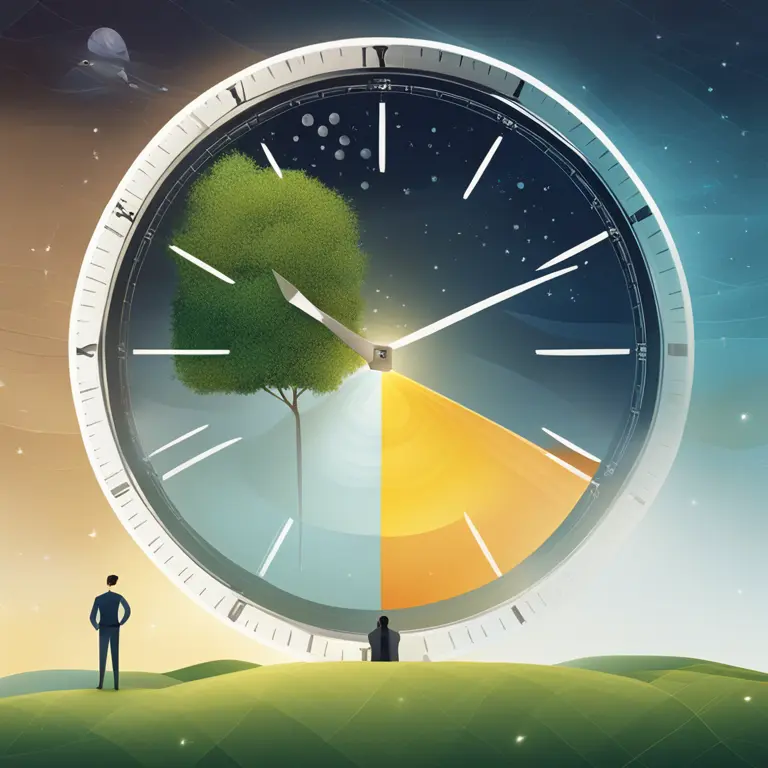
The Rhythms Within: Biological Cycles in Psychology
Delve into the intricacies of biological rhythms and their significance in psychological well-being, uncovering how these natural cycles govern our lives.
article by Adrian Wallace
Defining Biological Rhythms
Biological rhythms are the natural cycles that regulate various physiological and psychological functions within the human body. These rhythms are endogenous, generated from within, though they can be influenced by external factors such as light, temperature, and social interactions. These cycles range from the well-known circadian rhythms, which follow a roughly 24-hour cycle, to the longer infradian rhythms, like the menstrual cycle, and shorter ultradian rhythms, like the stages of sleep. Spanning across various time frames, they synchronize various bodily functions, including sleep-wake patterns, hormonal activity, metabolism, and mood.

The Circadian Clock
The circadian rhythm, perhaps the most studied biological rhythm, is driven by an internal circadian clock located in the suprachiasmatic nucleus of the hypothalamus. This internal time-keeping system coordinates with cues from the environment, primarily light, to align the body's functions with the day-night cycle. Disruptions to the circadian rhythm, such as those experienced by shift workers or due to jet lag, can cause significant stress on the body, leading to impaired cognitive functions, mood disturbances, and long-term health issues including a heightened risk for chronic diseases.

Infradian and Ultradian Rhythms
Infradian rhythms, which have cycles longer than a day, include phenomena like the menstrual cycle, seasonal affective disorder, and even annual migration patterns in animals. On the other end of the spectrum, ultradian rhythms, which last less than 24 hours, govern processes such as the stages of sleep, heart rate and blinking. These rhythms can be thought of as the ebb and flow of the body’s processes, ensuring that physiological need meets timely execution. Understanding these rhythms offers insights into managing energy levels, improving productivity, and tailoring health interventions.

Psychological Implications
Psychological well-being is deeply intertwined with biological rhythms. Disorders such as Seasonal Affective Disorder (SAD) and sleep disturbances reveal how deeply the mind is affected by these cycles. The timings of hormone release, which can affect mood and cognition, follow these rhythms as well. Indeed, therapies that focus on rhythm adjustment, such as light therapy for SAD or chronotherapy for sleep disorders, show the strong link between rhythm regulation and mental health.

Monitoring For Better Health
Advances in technology now allow for more precise monitoring and adjustments of biological rhythms. Wearable tech and smartphone apps can track sleep patterns, activity levels, and even predict menstrual cycles, providing personalized data useful for optimizing one's lifestyle. As we move into 2024 and beyond, this biofeedback will become more integrated into everyday health management, potentially reducing the risk of rhythm-related disorders.
Rhythms and Society
The study of biological rhythms extends beyond individual well-being, touching on social psychology and the structuring of work and leisure. As society becomes more aware of the importance of these cycles, there is a growing advocacy for policies such as flexible work hours and the importance of adequate lighting in workplaces to respect the body's natural rhythms. Embracing these aspects of human biology could lead to healthier, more productive societies.
Published: 1/30/2024
Modified: 1/30/2024
More predictions
Come back here soon to learn more about yourself and your future


The Rhythms Concept: A Guide to Biorhythms
Discover the intriguing concept of biorhythms: the cyclic patterns influencing our physical, emotional, and intellectual states.


The World Of Rhythms: A Guide to Biorhythms
Delve into the world of biorhythms to comprehend how they influence our physical, emotional, and intellectual states. Discover their significance and implications for your day-to-day life.


A Guide to Biorhythms Journey
Embark on a journey of self-discovery through the science of biorhythms to optimize your life's potential.